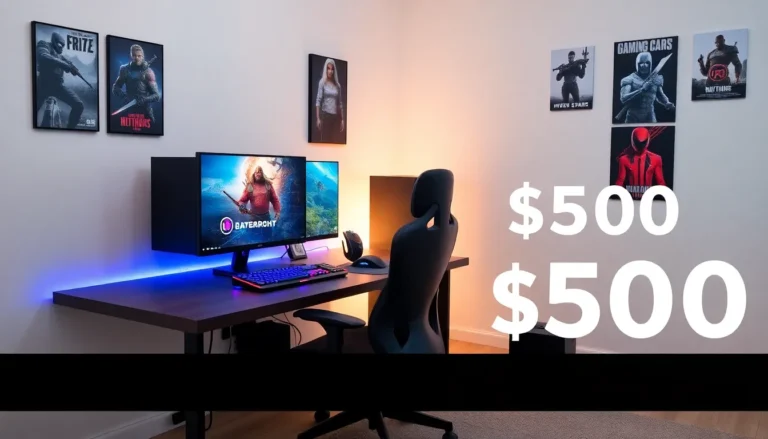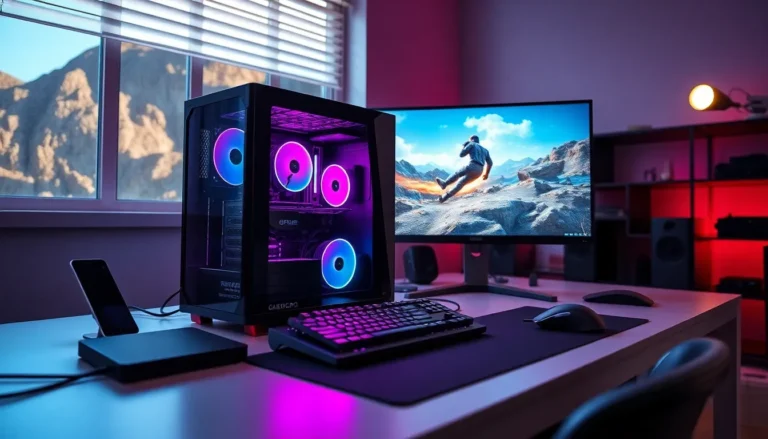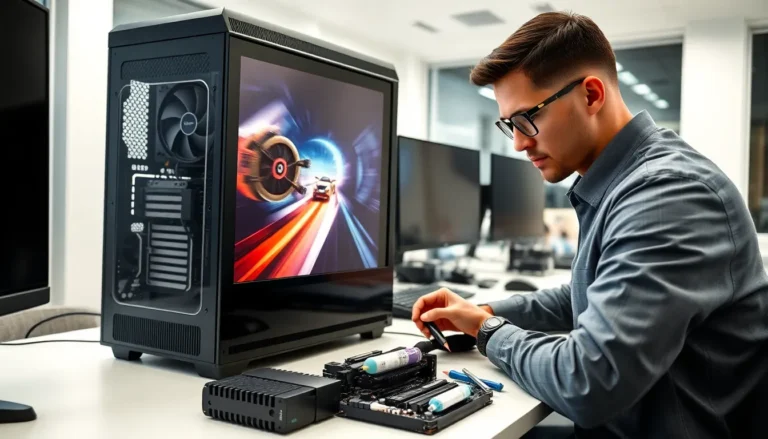Table of Contents
ToggleWhen considering a new gaming setup, many gamers face a critical question: is it cheaper to build a gaming PC or opt for a prebuilt one? This dilemma can feel like deciding between pizza and tacos on a Friday night, hard to choose, but important. In this guide, we’ll explore the costs associated with building your own machine, weigh the pros and cons against prebuilt options, and uncover potential long-term savings. So, grab your favorite snack, and let’s jump into the nitty-gritty of gaming PC economics.
Understanding the Costs of Building a Gaming PC

Building a gaming PC can be a fun yet intricate journey. The initial cost to consider is the collection of components, each plays a vital role in crafting the gaming powerhouse you envision.
Component Breakdown and Pricing
The primary components include the CPU, GPU, motherboard, RAM, storage, and power supply. Prices for these parts can fluctuate depending on the market and availability. For instance, a decent mid-range CPU might run you around $250, while a high-performance GPU could set you back $500 or more. Don’t forget about the motherboards, which vary from $100 to well over $300, depending on features and quality.
RAM typically costs between $50 to $150 for a good amount, while storage options present a range from $50 for HDDs to $200 for SSDs. Finally, power supplies, cases, and cooling systems add extra dollars to your budget. When all is said and done, one can expect to spend anywhere from $700 to $2,000 to build a complete gaming PC, depending on one’s performance requirements and choices.
Now, while these numbers may seem daunting, they aren’t set in stone, much like that pile of laundry that somehow multiplies. It’s important to consider your needs and budget carefully.
Comparing Prebuilt Vs. Custom Builds
Prebuilt gaming PCs often come with the convenience of being ready-to-go right out of the box. But convenience comes with a price.
Examining Hidden Costs in Building a PC
While building a custom PC can seem like the more economical choice, hidden costs can creep in. For example, if you factor in tools needed for assembly or potential troubleshooting, expenses can rack up quickly. Some builders may need to purchase thermal paste, additional cables, or even a storage solution if they make a mistake during assembly.
Also, warranty considerations are crucial. Prebuilt systems often carry warranties that can provide peace of mind. A DIY enthusiast may find themselves navigating support challenges independently. So while a custom build may save you dollars upfront, potential long-term costs for problems down the line add complexity to the equation.
Potential Long-Term Savings
The allure of a custom-built gaming PC isn’t just about upfront costs: the potential for long-term savings also plays a significant role. With a custom setup, upgrading individual components over time can be far more economical than purchasing an entirely new system.
Factors Influencing Overall Costs
Also, consider the longevity of your components. High-quality parts can remain viable for years, drastically extending the lifespan of your build. While gaming needs may evolve, the ability to swap out hardware, say, upgrading the GPU or adding more RAM, can save users considerable amounts in the long run.
In contrast, prebuilt systems often require complete replacement when upgrades become necessary. The combination of long-term savings and personalized performance optimization with custom builds may sway the decision for many gamers.
Skills and Tools Required for Building
Before rolling up their sleeves, potential builders should assess their skill sets. While constructing a gaming PC isn’t rocket science, it does require a degree of comfort with computer hardware.
Building also demands specific tools like a screwdriver (preferably magnetic, if you’re forgetful like many.) and sufficient workspace. For those with no experience, countless tutorials exist online, reducing the intimidation factor. Still, it’s essential to feel confident navigating through wiring and component interactions. If someone enjoys tinkering and problem-solving, this could be the perfect project. But, if they cringe at the thought of assembling a puzzle, a prebuilt might be the way to go.





